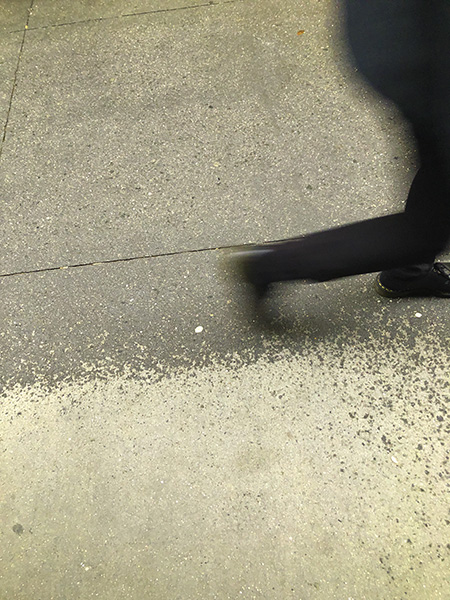The Runaway License
I know this title sounds like a John Grisham mystery, and while runaway licenses do have elements of mystery in them they’re anything but fiction. Unfortunately, they do exist, and they can be difficult to deal with, very difficult to control, but not always that difficult to extricate oneself from with some persistence.
Here’s What It Is
A “runaway license”, very simply, is a license that has somehow spun out of control.
The basic premise of a license is simple: the owner or representative of the owner of art grants a manufacturer or publisher the freedom (license) to use his or her art on commercial products.
There are all kinds of art licenses, probably as many as there are lawyers who can write them. They can be easy to read or painful to read. Some are so dense that even attorneys and licensing agents have a hard time getting through them. Others are so simple, so skimpy, that they leave out a lot of important provisions that should always be in every art license.
Some of the basic provisions that should be in every license include the length of time that the license will run and the rights of the parties to the license.
A license should state, either in itself or in an addendum attached to it, which pieces of art are to be used, and on what types of products.
The license should allow one party to terminate it if the other party breaks it by violating any of its important terms. And there should be simple ways in which an artist can determine whether the licensee (the company that has licensed the art from the artist) is following the terms of the license. It’s all very simple, or at least it should be.
But if it’s that simple, how can a license go out of control? There are several ways this can happen, and they can all lead to unwanted, and occasionally nasty, results.
A Doleful Tale
I recall hearing from an artist a few years ago about one such license. She came to me for help and she told me a doleful tale. You see, she had started a business relationship with a really nice fellow a few years before.
If I recall the details correctly, the fellow produced and sold home decor products like trays, mugs, coasters, that sort of thing. He had a small company and everyone in it seemed very nice – at first. Perhaps most importantly to the artist, they all seemed to love her art. So she signed an agreement, or license, with them that allowed them to use her art on several different types of products.
The company liked her art so much that they decided on their own to expand their use of her art to other products that weren’t listed in the agreement. She didn’t find out about that until a friend told her she’d seen them in a store.
Before long, the company was devoting several pages of its catalog to a whole range of products with her art. The products were lovely, or at least they looked pretty good in the catalog. So what was the problem?
Well, as she explained it, they had never gotten her permission to use her art on all these products. She didn’t know what they were doing, she wasn’t sure what the products really looked like as she’d never received any samples, and she didn’t know what they’d do next.
Wasn’t she being paid well for all this usage, I asked? She replied that she had called them several times about royalties but could never seem to get through to the right person.
She did receive some money at the beginning of the relationship, about a thousand dollars, and she was very happy with that payment, but that was two years ago and she hadn’t received anything since. Yet more and more products were being created and sold, with her art.
Well, I asked, did the agreement have some sort of termination date, or length of time that the license would run, or perhaps a statement about what she could do if they violated the terms of the agreement? She wasn’t sure if it did or not but she assured me that it was a brief, straightforward license.
Where was it, I asked? Could she send it to me, or read me a bit of it, or answer some specific questions about it? It’s always helpful to know what you’ve signed your name to! Well, she wasn’t quite sure where it was; it was with her papers somewhere and she hadn’t seen it for awhile, but no matter, she was sure that the company had the best of intentions.
She just wasn’t sure what they were doing with her art, and she would like to get some money from the company. It would also be nice to get a sample or two of the products that they had made with her art on them. Could I help her?
Ouch!
That was back when I did consulting work on an occasional basis, time permitting, but this was such a mess that she didn’t need an agent to sort it out.
What she really needed was a good copyright attorney.
She was dealing with a runaway license and didn’t know it. Worse, although she had an idea that something wasn’t quite the way it was supposed to be, she had so little certainty in the process of licensing that she lacked the confidence to call them up and demand accountability. She felt, as they say, “used, abused, and refused.”
What had she done wrong?
Without seeing the license it was hard for me to know exactly, but several errors were obvious. First, she had apparently not understood the license that she had signed at the beginning of the relationship.
Perhaps she had gone ahead on verbal assurances from these very nice people and never bothered to read it. Or perhaps it was just too difficult to read. Then once it was signed, instead of putting it in a safety deposit box or some other safe location, she put it somewhere else and then forgot where it was so she couldn’t refer back to it.
She wasn’t familiar with the process of licensing so she didn’t know what her rights were, or weren’t. She didn’t know what to expect. Was it normal that companies could do what they wanted with art, or was this unusual, she asked?
And while it gave her a good deal of pleasure to know that her art was being used on so many pretty products and that so many people appreciated it, as time wore on she felt that she had been forgotten, and even though her irritation increased, she lacked the willingness to face a confrontation with them. What if she were wrong?
She was embarrassed to ask questions or to be too persistent. What if she appeared stupid or unprofessional? What if they decided she was a problem and didn’t want to use her art anymore? Then that might hurt her career or get her into trouble or even worse, she might wind up in court.
She couldn’t tell, she didn’t know, she was confused, so she was immobilized.
Then the story got even worse. She told me that she had heard that the company that used her art was being sold. She didn’t know if her art was going to be used by the new owners, perhaps under a new or different company name. Would they put her art on other products? Would she lose her ownership of her art entirely? Again, she just didn’t know and she was afraid to ask.
Been There, Done That
What a mess! But I’ve heard similar stories from other artists, and I’ve had a few runaway licenses myself. One was with a small company whose owner was always “in the warehouse,” “out for the day”, “in a meeting”, “at a show” – anywhere but near a phone where I could speak with her.
Imagine our surprise when the artist and I discovered that our licensee was reproducing dozens of pieces of art for her product labels, without even telling us much less asking for our prior approval.
Samples? Royalty checks? Royalty reports? Straightforward communication? Forget it! This lady was out of control, her company seemed out of control, her record-keeping was apparently nonexistent or abysmal. We had a runaway license on our hands.
In another recent instance with a much larger company, I discovered to my dismay that the company had gone ahead and put my artist’s work on unauthorized products which were in direct competition with the products of a brand new licensee. They had acted as though they – and not the artist – controlled the use of the art, and they had done whatever they wanted with it.
In the meanwhile I had assured the new licensee in good faith that there were no products in existence or under license with any other company that would directly compete with his. Then I found out that I had been blindsided by a runaway license.
If I hadn’t handled it smoothly, if my new licensee hadn’t been so understanding, he could have brought me to court for negotiating in bad faith or for fraudulent representations. Needless to say, this wasn’t a situation I enjoyed being in. I was upset, my artist was upset, the company that had run away with my artist’s work and overextended themselves, taking orders for unauthorized products that put us in a major conflict between licensees, was upset and it all could have ended very badly. But this time I was lucky.
What Did I Do Wrong?
Just like the artist who didn’t follow up closely enough with those ever-so-nice people who loved her art, I didn’t follow up closely enough with this one licensee.
I had cut them some slack because it was a financially successful license. I had no idea that they were considering producing products that might conflict with the new license that I was negotiating.
I “assumed” that the licensee would come to me for approval of new product categories, were that to be the case. After all, that’s a key provision of our license with them. But I was blindsided when the license went runaway, and by that time it was all damage control. As they say, “assumption is the mother of all screw-up’s.”
Years ago I had a boss who told me sternly never to do anything out of desperation. I must admit that when a good deal of income is on the table, a sense of desperation can enter the picture. I want and need the income, my artist wants and needs the income, we all want and need the income. The more income that’s in the balance, the more the sense of desperation. And it’s always so much easier, it seems, to avoid confrontation, to go along, to be passive, to go on hoping that things will work out as they continue to spiral downwards.
Believe me, when you have to start thinking and acting like that, I assure you that “things” probably won’t work out. And when they don’t work out, it may be time to bail out.
– – – –
(c) Lance J. Klass. All Rights Reserved. This article may not be reproduced with the expressed written permission of the author.
For information about copying all or part of this article, contact the author atart@porterfieldsfineart.com.
Be sure to check out our main site at www.porterfieldsfineart.com.
Follow and “Like” us on Facebook and join with us on Twitter for timely tweets on the subject of art and art licensing.
You may also wish to check out our Art and Licensing News site at www.artlicensing.org for daily updates of the latest in news and articles about art and art licensing.
Tags: art licensing, how to license your art, licensing problems

















Care To Comment?